In my last post, I talked about how serums are among the few skincare product types that can be expected to deliver real skin improvements, since serums can be formulated to target a single, specific problem, without the limitations that primary functions like cleansing or moisturization would impose. I’m nothing if not good at pretending like I have some kind of plan, so today I’m comparing two anti-aging serums I’ve been testing for the past few months: Primera Super Sprout Serum and Mamonde First Energy Serum. Neither of these were holy grail for me, but as I put them through their paces, I thought a lot about the concept of anti-aging and for whom these products might be better suited.
The products reviewed in this post were provided at my request by Jolse.
Anti-aging serums: The basics
As a Snail of a Certain Age (it’s under my picture over there on the right), I keep at least one anti-aging serum in my skincare wardrobe at all times, even if I’m sometimes fuzzy on what it’s actually going to do. An anti-aging serum just seems like a good thing to have around. This is absolutely not a smart way to go about building a skincare routine, so for my first act, I’m going to talk about the concept of the anti-aging serum in general!
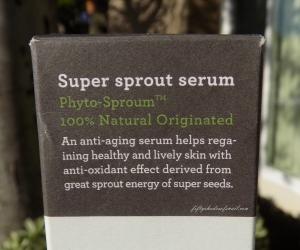
At the most basic level, an anti-aging serum should oppose visible skin aging. It’s right in the name! The main signs of visible skin aging are fine lines and wrinkles, dark spots due to sun damage, and loss of elasticity due to collagen breakdown due in large part to sun damage. An anti-aging serum should therefore either actively reduce existing signs of aging, or delay their appearance in the future, or, ideally, both.
(Speaking of sun damage, sunscreen remains the most effective way to prevent future skin aging. Period. So get some and use it. Don’t forget. Fiddy nags because Fiddy luhhhs.)
Actively reducing existing signs of aging is a very difficult thing for a topical cosmetic product to do. Fine lines, wrinkles, and loss of elasticity are caused by the breakdown of collagen in the skin and by aging skin’s inability to produce enough new collagen to compensate. Only a few ingredients have been proven to increase collagen production. The most common are vitamin C and retinoids, including OTC retinol and prescription tretinoin, my drug of choice. Sunspots are a little easier to treat, since they’re reducible not only with vitamin C and retinoids but also with niacinamide, arbutin, and a number of other melanin-inhibiting agents. Still, even sunspots require some serious firepower to see significant change.
So if an anti-aging serum doesn’t contain many (or any) of those Tier 1 anti-aging ingredients or Tier 2 lightening agents, what gives it the right to call itself an anti-aging serum?
Most likely, antioxidants. Antioxidants may help to delay skin aging by protecting against the cell damage caused by free radicals, which are generated by UV radiation, pollution, and, oh yeah, pretty much just being living organisms.
We get many of our antioxidants in our diet (or supplements if you have a shitty diet like me). Unfortunately, our skin tends to get the shaft when it comes to ingested nutrition, most of which gets used up by other systems before our largest organ even has a chance to benefit. So it makes sense, at least to me, to add some topical antioxidants to an anti-aging skincare routine. While you may not see visible changes to your skin over the short term from an antioxidant serum, theoretically you will be minimizing the free radical damage that would otherwise accelerate your skin’s aging in the long term.
Without further rambling, here are two ways to do so!

Primera Super Sprout Serum vs. Mamonde First Energy Serum comparison review
I requested both of these serums from Jolse a while back. I’ve been through several anti-aging serums in my time, including the famed Missha Long Name Ampoule, the reformulated Longer Name Ampoule, and my near-holy-grail Banila Co Miss Flower & Mr. Honey Essence Oil, and I felt the itch for something new. I was also a little tired of snails and bees at the time (GASP!!) and wanted to explore other star ingredients. Both the Primera and Mamonde serums rely heavily on botanical extracts.
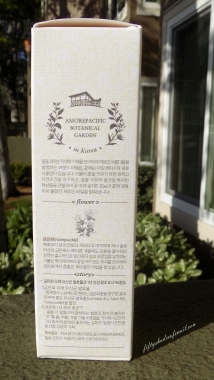
Purpose: Primera Super Sprout Serum and Mamonde First Energy Serum are billed as moisturizing anti-aging serums that will increase skin’s elasticity and youthful appearance while protecting against free radical damage. Mamonde First Energy Serum also claims whitening effects.
Best suited for: All skin types and ages as part of a well balanced skincare routine.
Do not use if: You are sensitive to fragrance, botanical extracts, alcohol, or anything else in the ingredients lists.
When and how to use: At the serum step of your morning and/or evening skincare routines, dispense one or two pumps of product and spread thinly over face. Pat in or let dry slightly before layering on additional products.
Primera Super Sprout Serum ingredients (via Hwahae): Water, propanediol, oryza sativa (rice) germ extract, glycerin, alcohol, glycine soja (soybean) sprout extract, sesaumum indicum (sesame) sprout extract, dicaprylyl ether, rheum undulatum root/stalk/stem extract, oleanolic acid, theobroma cacao (cocoa) extract, C14-22 alcohols, sucrose palmitate, xanthan gum, glyceryl stearate citrate, hydrogenated lecithin, glyceryl stearate, C12-20 alkyl glucoside, cellulose gum, sodium phytate, glyceryl caprylate, dextrin, mannan, sucrose, fragrance (CosDNA analysis)
Mamonde First Energy Serum ingredients (again via Hwahae, because I just had to choose two products without English ingredients printed on the packaging): Lonicera japonica (honeysuckle) flower extract, butylene glycol, cyclopentasiloxane, dipropylene glycol, diethoxyethyl succinate, glycereth-26, niacinamide, alcohol, water, dimethiconol, salix alba (willow) bark extract, cyclohexasiloxane, glyceryl polymethacrylate, Bis-PEG-18 methyl ether dimethyl silane, polysorbate 20, cetearyl alcohol, hydroxypropyl starch phosphate, PEG-60 hydrogenated castor oil, xanthan gum, acrylates/C10-30 alkyl acrylate crosspolymer, glyceryl stearate, stearic acid, hydrogenated lecithin, chondrus crispus (carrageenan), phenyl trimethicone, adenosine, polyglyceryl-3 methylglucose distearate, propylene glycol, disodium EDTA, phenoxyethanol, fragrance (CosDNA analysis)
Notable ingredients and comparison: Right off the bat, I’m starting to get a sense of the different ways that the Primera and Mamonde serums aim to tackle aging skin.
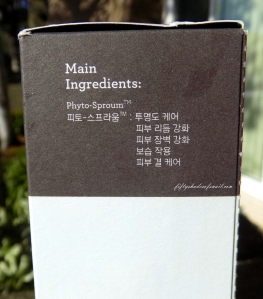
If you’re looking for an anti-aging serum that takes a more “natural” approach with a “cleaner” ingredients list, the Primera Super Sprout Serum will probably be more your style. The Super Sprout Serum contains a larger variety of plant extracts, including soybean sprout extract, which contains potent antioxidants and shows some promise for fading excess pigmentation. CosDNA doesn’t raise a single flag for this product, and while CosDNA is most definitely not infallible or universally reliable, the clean list is reassuring. On the other hand, I ran the ingredients list past my master indie formulator friend Chel of Holy Snails fame, and she pointed out that there aren’t any standard preservatives in the Super Sprout Serum. It’s likely that Primera is relying on the dark glass pump bottle to help prevent contamination and degradation. Preservative-free cosmetics aren’t a new thing, and this doesn’t have to be a deal-breaker, but I personally prefer conventionally preserved skincare. I’m paranoid about things growing in the stuff I smear on my face.
The Mamonde First Energy Serum has a more conventional-looking list of ingredients. Apart from the wonderfully antioxidant and anti-inflammatory honeysuckle flower extract at the top and the anti-inflammatory willow bark extract down below, this product of the Amore Pacific Botanical Garden is made mostly of silicones and siliconey things. It doesn’t have half the botanical cachet of the Primera Super Sprout Serum. Buuuuuut the Mamonde First Energy Serum does have some nice things the Primera does not. Namely, the research-backed brightening and anti-aging ingredients niacinamide and adenosine. I’m a big fan of both these ingredients and would rather have them and some dependable preservatives than a whole boatload of maybe-they-work-maybe-they-don’t extracts.
(Ideally I’d have both, but this is what we’re working with. Can’t marry Chris Hemsworth while expecting him to also be Cillian Murphy.)
Winner for the ingredients round: Mamonde First Energy Serum by a bit. There’s a definite aesthetic and philosophical appeal to Primera’s shorter and more natural ingredients list, but when it comes to a serious skincare product, give me the proven stuff, please.
Performance
Testing two similar products against each other is fun but time-consuming. To compare the Primera Super Sprout Serum with the Mamonde First Energy Serum, I used them one at a time on my whole face for equal periods and then simultaneously for several weeks, with one on the left side of my face and the other on the right.
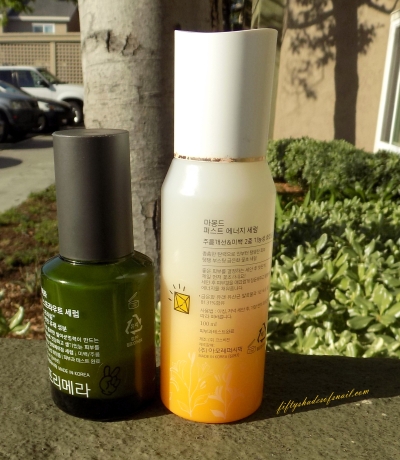
Primera Super Sprout Serum is a dense, thick serum with an earthy but sophisticated vegetal scent. It smells like a fancy chef’s herb garden with some lavender blooming off to the side. Of the two products, the Super Sprout Serum has a more nourishing feel. It takes a minute to pat or sink in and can leave a slight sticky film if applied too generously, but my winter-thirsty tretface drank it in and appreciated every drop of rich moisture. I also found that I could get away with quite a short routine as long as the routine included the Super Sprout Serum: my skin would stay soft and supple almost all the way through to my evening cleanse.
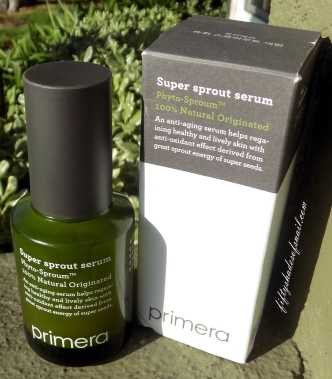
Unfortunately, while I’m willing to give the long-term protective effects of the antioxidants in the Super Sprout Serum the benefit of the doubt and assume that they are indeed neutralizing at least some free radicals, I’m at an age where I really want to see some immediate change. Moisturization doesn’t count. I have lots of moisturizers. If I’m using an anti-aging serum, I want it to anti-age me!
The standard against which I judge all other anti-aging serums is my Banila Co Miss Flower & Mr Honey Essence Oil, which contains a buttload of collagen that provides a near-instantaneous firming and smoothing effect on my face to tide me over while its brightening ingredients and antioxidants work their long-term magic. Primera Super Sprout Serum doesn’t do anything like that.
What to expect from Primera Super Sprout Serum: A nice boost of skin-softening moisture; possible protection against free radical damage. Would be a promising choice for dry skin that only needs preventative anti-aging.
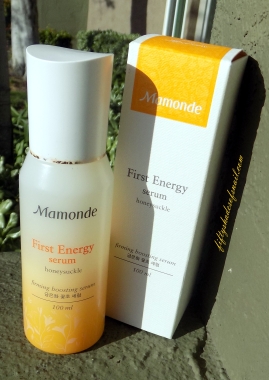
Moisturization is one thing I didn’t get from the Mamonde First Energy Serum. Thinner and more liquidy than Primera Super Sprout Serum, with a siliconey slip and a fresh, pretty floral fragrance, Mamonde First Energy Serum feels initially hydrating and refreshing but absorbs super fast and without leaving any extra moisture. On days when I used this product in a short routine, my face got tight and uncomfortable, fast. I wouldn’t rely on it as a hydrating or moisturizing step.
For me, that’s totally fine. Like I said, I have plenty of moisturizers. Judging by anti-aging effects, this product definitely came out ahead. Thanks to all those siliconey-type long science name ingredients, Mamonde First Energy Serum dries down to a supple, silky finish that provides an almost primer-like surface for whatever I put on top. Fine lines and pores are minimized and my skin looks subtly blurred, as if I’ve turned on a real-life beauty mode filter and dialed it down from CG Plastic to Petal Soft.
Even more compelling than the superficial smoothing effect of the First Energy Serum is its brightening power. Split face testing is great because it reveals things I wouldn’t notice if they were happening evenly all over my face. By the time I finished comparing these two serums, the side of my face I’d assigned to the Mamonde had noticeably fewer and noticeably lighter sunspots overall than the Primera side. Thanks, niacinamide!
What to expect from Mamonde First Energy Serum: Instant smoothing and blurring primer effect, hyperpigmentation fading over several weeks of use. Better for skin already showing signs of aging, but dry skin may require additional moisture steps.
Winner for the performance round: Mamonde First Energy Serum, the anti-aging serum that actually demonstrated anti-aging abilities!
Conclusion: For me, both the Primera Super Sprout Serum and the Mamonde First Energy Serum are above average in their category. They’re reasonably priced, pleasant to use, and contain promising protective ingredients. But while I appreciated the moisture provided by the Primera Super Sprout Serum, moisture was a secondary consideration. Mamonde First Energy Serum won this showdown because it delivered immediate fine line smoothing and real, lasting sunspot fading, showing that it has the juice to actually do something about aging skin.
Ratings: Mamonde First Energy Serum 4/5 || Primera Super Sprout Serum 3/5
Rating scale:
Where can I buy Primera Super Sprout Serum and Mamonde First Energy Serum?
From W2Beauty:
From Jolse:

I think I just had a heart attack, you like Cillian Murphy and Bangtan/JHope and your product recs work really well for me…can we be besties?
LikeLike
So, comparing the Banilla essence oil and the Mamonde serum, which do you like better? I already have the Banilla and love it.
LikeLike
Oooo, as a lover of all things floral, I’ve been eyeing Mamonde products since I first bought their rose masks. The First Energy Serum is on my list of things I really want to buy but probably shouldn’t. This review isn’t helping.
LikeLiked by 1 person
Have you tried any of the Yuri Pibu products? I started using their Artichoke Power Essence and Cucu Maronza Cream a bit over a week ago and already see positive changes! I don’t know which, or if both, are contributing. I was too eager to try them separately. But ever since I’ve used them, my left laugh line (which is much deeper than my right) has significantly softened!
Plus I love love love their clean ingredients!
LikeLiked by 2 people
I’m just jealous that you HAVE a patio, let alone a wall on it. NYC apartments aren’t so good for things like that.
LikeLiked by 1 person
Thanks for this. I’m looking to introduce a serum into my routine. I’m nearly 30 after all 🙂
LikeLiked by 1 person
So far, I’ve bought one collagen serum. But I tend to use carrier oils at the serum stage of my skin routine(baobab, and almond), and compared with the collagen serum, they do a lot more for my skin.
LikeLike
With all due respect, how do you know that it is these products that are doing something for your skin rather than the tretinoin? Or if the fading is actually from the Mamonde, or the other products you are already using with niacinamide? Or even from Vit C instead? And I’m sure some of your products probably have some licorice. Or maybe some of the ginseng you are using is starting to contribute its little bit, and on and on…
I see that you use a lot of products and rotate between them all on a daily level. Surely, particularly in your case it is a synergy of all the different things you are using over a given amount of time. It would be very difficult to pinpoint exactly what is doing what.
I am new to all this and have just started slowly implementing some AB products plus tretinoin into my routine, and am already finding it difficult to pinpoint which exact product might be doing what. I’m very curious as to how someone like yourself who rotates through an even greater amount of products including sheet masks, and frequently reviews products is able to determine such things.
I am very interested in your reviews and your take on things, as I too am interested in anti-aging and decreasing pigmentation, but seeing as you already have so many heavy-hitters in your routine I wonder how you can be sure. I also want to limit how many things I rush out and buy.
LikeLike
That’s exactly why I do an extended period of split face testing, using the product on one side of my face only while everything else in my routine continues to go all over. That way, if I observe a change only on that side of my face, it’s much easier to identify the cause 🙂
LikeLike
Ok, thanks for that. So are you saying that for x amount of time you only wash your face and then put the one product on the left hand side of your face, and then do all the other things on the right hand side? How long are you doing it for?
LikeLike
No, not exactly. For 2-4 weeks, I’ll do everything the same all over my face except that I will use X product only on one side (or if comparing products like here, will do X product on one side and Y on the other). I do also spend a little time trying a product on its own with nothing but cleansing, but that’s more just to gauge how moisturizing it is.
LikeLike
Thanks for explaining it. I will try this myself. Though I can’t help but come back to my original point, which is that you are using strong ingredients in all other products and whilst you are attempting to isolate it by restricting the area, you really can’t as the whole routine is built on layering. I’m also sure you are well aware that many believe that you can’t really see results until cell turnover at 6 weeks.
LikeLiked by 1 person
Sure, of course it isn’t the most scientifically sound. I hope I haven’t given the impression that that’s what I’m claiming. This is how I evaluate products’ effects on me, and so far I’ve found it accurate enough for me–YMMV in everything of course–that if I drop a product for a while and then pick it back up again, I almost always know exactly what changes to expect within a period of time. And yes, my testing schedule specifies that for products with claimed effects beyond just cleansing, hydration, or moisturization, I use them for 4 weeks minimum (usually works out to more as I like to take my time and keep observing beyond the minimum point unless I didn’t like the product and just want it out of my life). Good luck with your testing and I hope I get to hear what you find for yourself!
LikeLike
Cillian Murphy?! Gag. I’m starting to question your judgment. 😁 –Angela
LikeLiked by 1 person
He’s an acquired taste. Also, I question my own judgment all the time, so join the club.
LikeLike
My partner would argue that nothing is actually anti-aging, and that the best anti-aging is just…not breathing. I’m halfway inclined to agree – it’s difficult to buy anything that claims to be anti-aging, because it’s just not something that exists. I do appreciate the inclusion of what has been proven to work, always great to see your blog posts in general. 🙂 🙂 🙂
LikeLike
After listening to the latest Snailcast, I say ignore the “anti-aging haters”! Don’t mean to get maudlin, but I’m a nurse & I think it’s really easy for people in their 20s or 30s to say things like “we’re all going to age/die/get sick/etc so why bother”. But everyday I see how a significant portion of people who are in their later 50s to 60s might as well look like & have bodies that act like those in their late 70s & 80s. And they die at the same rates too. And it’s all from not taking care of themselves. Oh and one of my dad’s oldest friends since elementary school, married to one of his best friends, never wore sunscreen and died prematurely of skin cancer. So again, keep doing what you’re doing!
LikeLike